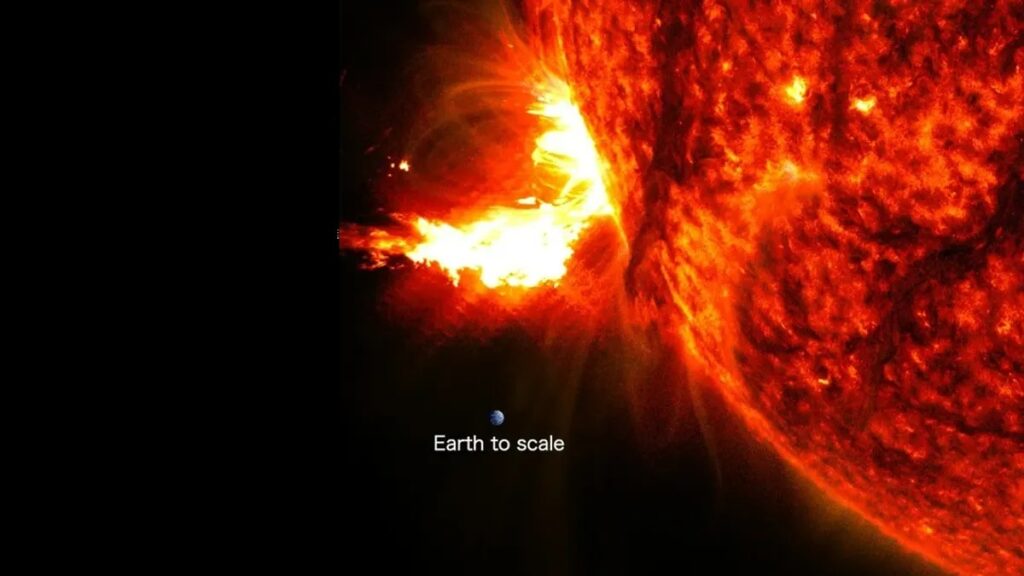
It released a powerful flare, as it peered from the limb of the Sun.
Recently, a powerful flare was released as it peered from the limb of the Sun. Somehow, Sunspot AR 3664 has returned. OK, not somehow. It simply moved around the Sun as the Sun orbits on its axis – but we wanted to do a Star Wars reference. Because, just like Palpatine, AR 3664 has put on a light show. It was responsible for the solar flares and coronal mass ejections that led to the spectacular auroral display a few weeks ago.
Although the sunspot has greatly diminished and is not as imposing as it was at the beginning of the month, it still shows that we should not underestimate it. NASA reports that it released an X 2.8 flare two days ago, not as powerful as what this spot was able to release in the past month, but still among the most powerful this solar cycle so far.

Image Credit: NASA/SDO
“Solar flares are powerful bursts of energy. Flares and solar eruptions can impact radio communications, electric power grids, navigation signals, and pose risks to spacecraft and astronauts,” NASA said in a statement.
The National Oceanic and Atmospheric Administration (NOAA)’s Space Weather Prediction Center currently warns of limited radio interference and power grid fluctuations, but mostly the event did not affect our planet as it was off to the side. Things might be different in the coming days. The sunspot might finally peter out not with a bang but with a whimper, or it might have one or several more flashes before disappearing.

Predicting solar activity is a very important job because infrastructure can be severely damaged. But we do not know enough about the Sun to have long-term forecasting or know when a series of coronal mass ejections will be released. The Sun is observed and scientists work out what will happen in the next several hours.
When AR 3664 released those flares and coronal mass ejections earlier this month, the Space Weather Prediction Center estimated it would create a severe geomagnetic storm before revising it to extreme once it got here, leading to the spectacular aurorae and some telecommunication issues that are being investigated.

The activity of the Sun is not expected to slow down for the next several months. We are around the solar maximum – the peak of activity in the roughly 11-year-long cycle that the Sun goes through. It could be that the best of Solar Cycle 25 is yet to come.

Leave a Reply